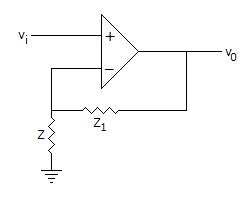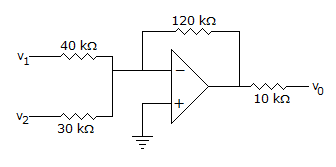ECE :: Analog Electronics
-
When Z1 << Z, The circuit of figure works as

-
In a class C operation VCC = 40 V, RL = 50 Ω. The maximum load power can be
-
IF VCC = 15 V, VCEQ = 5 V and ICQ = 50 mA, the efficiency in class A operation is
-
A bridge rectifier circuit has a dc load current of 10 mA and a filter capacitance of 1000 μF. The peak to peak ripple voltage is
-
Which of the following best represents the bandwidth of an actual op-amp?
-
For an ideal noise free transistor amplifier the noise factor is
-
In a crystal
-
Ultra high frequency oscillators work in the range
-
N-channel FETs are superior to p-channel FETs because


 Whatsapp
Whatsapp
 Facebook
Facebook


 .
.